# Folders
This tool is used to manage filing structure, index, and permissions of your docufree site. Some functions may be limited due to admin status or permissions.
# Location Tree
The left side of the view shows a tree-view of folder locations for the site. Each node also shows a quick glance of number of index associated and how the permission is resolved at that location as seen below:
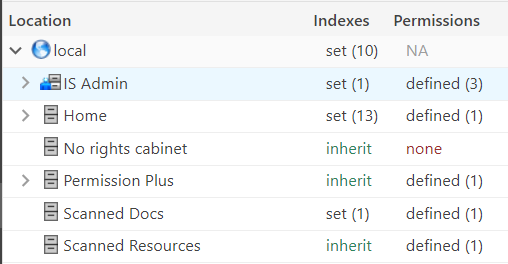
Index definition is additive, so a location's index is what's defined at that location plus all its parent nodes.
Permission is always overridden. When a location has permissions defined it will not inherit parent locations' permissions.
Select a node in the location tree to perform additional actions using the tabs to the right.
# Location Detail
After selecting a location, you can rename/delete it or add additional folder under it when applicable as seen below:
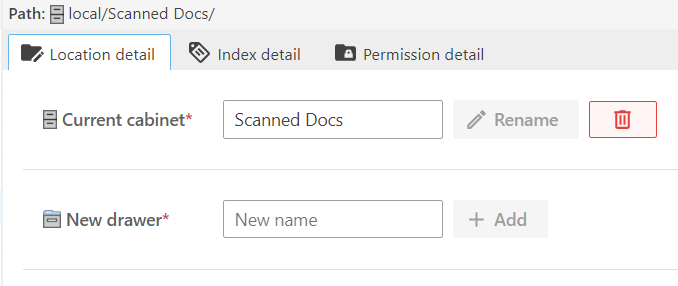
Rename a location using the top textbox and add new sub-location using the second textbox.
Note
You cannot rename the site root location.
# Email Imports
Docufree supports importing files from mailboxes created by Docufree when the site is created.
Note
A mailbox can only be configured to import to a single folder location.
When the selected location is a folder, you may also be presented with the options for importing emails to current location. These appear just below the normal location detail as seen below:
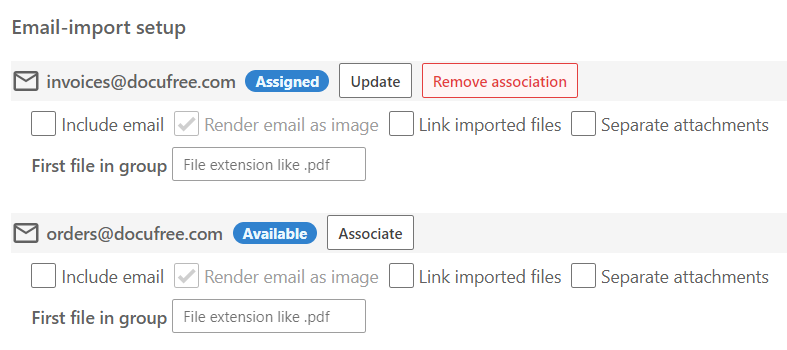
You can associate an available mailbox with current folder or remove association of a mailbox even when it's not associated with the current location.
# Index Detail
Indexes are first defined on a location before a file in that location can have the corresponding index values. Examples of an index are invoice number, account number, check date, and check number. Indexes can also be useful in satisfying compliance requirements.
Note
Index definitions can be added at the site, cabinet, drawer, or folder level.
With a location selected, the Index detail tab shows a list of defined index definitions. Select a definition and you can see its detail to the right as seen below:
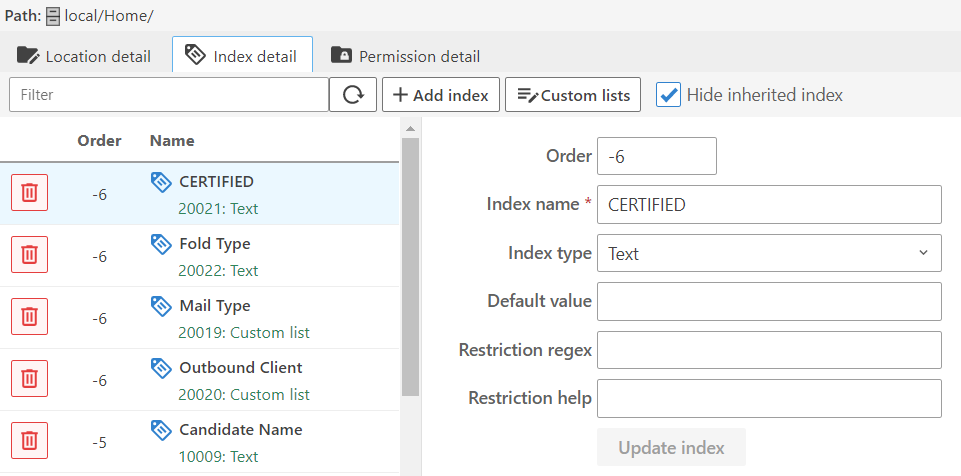
You can add a new definition by clicking the Add index button in the toolbar, and remove a definition using its trashcan icon in the list.
# Custom Lists
Sometimes it is not enough to use a free text field for an index, and you need to restrict the possible values to a non-trivial list. The custom list provides this functionlity by allowing you to define your own lists. Once a custom list has been created you can create/modify index definitions as normal and refer to the custom list.
To manage custom lists click on the Custom lists button in the toolbar and you will see a new view with three columns like the following:
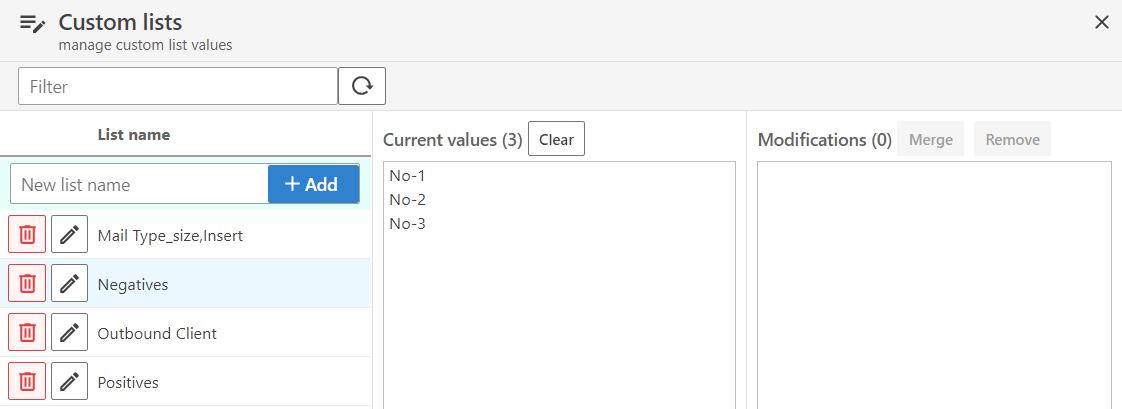
- To add a new list, enter the name in the New list name textbox and click on the Add button.
- To view the list values, click on the name in the left list. The values will be displayed in the middle column.
- To remove all entries from the list click on the Clear button in the middle column.
- To add more entries to the selected list, enter the new entries on the third column and click on the Merge button.
- To remove entries from the current list, put the entries to be removed on the third column and click on the Remove button. A quick way to enter them is to copy and paste the entries from the center column into the third column.
Note
The list values always display in alphabetical order. You cannot reorder the entries.
# Permission Detail
This is found in the third tab available after selecting a location. On the left you will see the list of defined permissions on this location (not inherited).
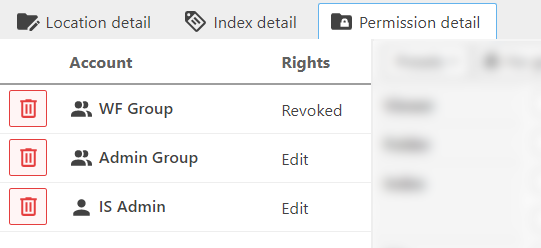
Permissions can be associated with a user or a group, indicated by its icon type. Click on the trashcan to remove a permission, and click on the permission to see its actual permission flags. The Rights column displays an at-a-glance category that approximates the actual permissions. It includes the following options:
- View - The permission at least allows viewing the document.
- Edit - The permission has some form of edit/write options enabled (eg. rename, create, edit...).
- Revoked - The permission has all options denied.
- Custom - The permission does not fit any of the previous categories.
TIP
The permissions are resolved to yield most allowance. If a user has 2 applicable permissions defined with different permission flags, the final permission for that user will be the combined allowed options from those two permissions.
# Permission Flags
The permission flag pane to the right shows the actual options for a permission definition. You can choose different groups/users to association the permission with before saving the flags using the dropdown buttons at the top.
You can also use the Preset button to automatically set permissions based on preset categories to get started. The options are None, Reader, Writer, and All.
Click on the Save permission when done.
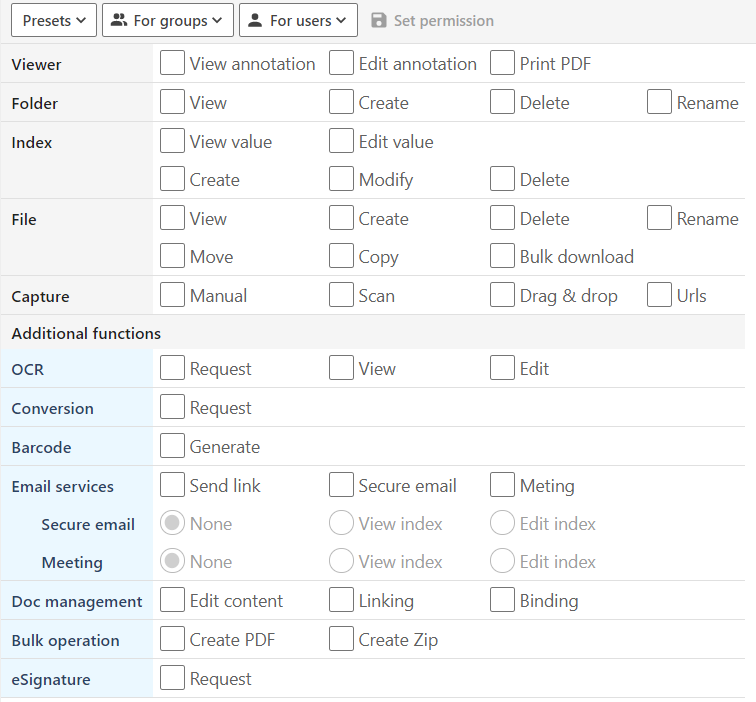
← Team Pages File Types →